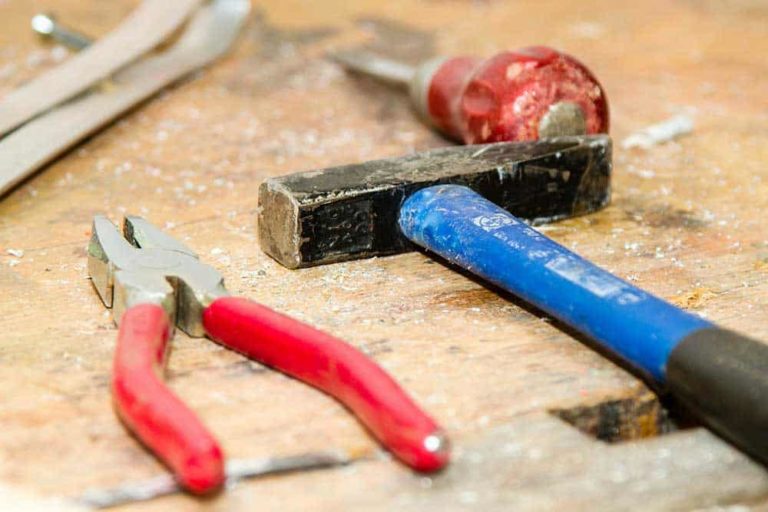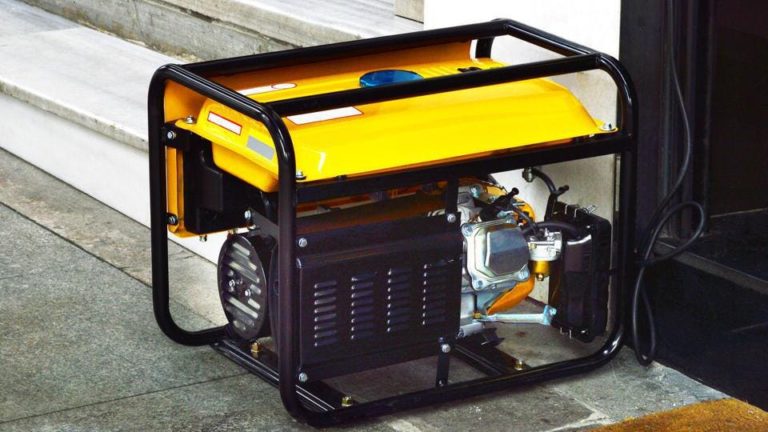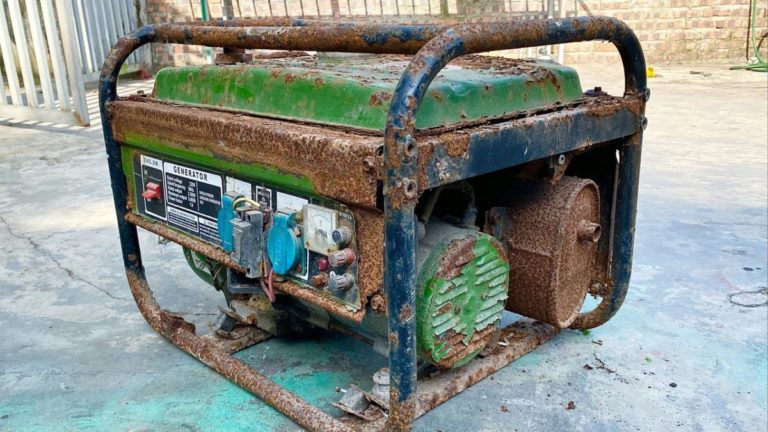Are you ready to break free from the grid and embrace a more sustainable, self-sufficient lifestyle?
Look no further than the Tesla Powerwall!
This cutting-edge energy storage system is revolutionizing the way we think about off-grid living.
In this ultimate guide, we’ll delve into everything you need to know about incorporating the Powerwall into your off-grid setup, from selection and installation to maintenance and beyond.
Whether you’re a seasoned pro or just starting out, this comprehensive resource will arm you with the knowledge you need to harness the power of the sun and live life on your own terms.
Determine your energy needs
Before investing in an off-grid system, it’s essential to understand your energy requirements. Consider factors such as the size of your home, number of occupants, and your energy usage patterns.
This involves understanding your energy requirements based on factors such as the size of your home, the number of occupants, and your energy usage patterns.
For instance, a larger home with more occupants will require more energy to power appliances and lighting.
Certain appliances like air conditioning and heating can consume a significant amount of energy, especially during extreme weather conditions.
Understanding your energy usage patterns is also essential, as some appliances like televisions and computers are used more frequently during certain times of the day.
To accurately determine your energy needs, it’s best to track your energy usage over a period of time using a killowatt meter or smart plug.
This will give you a better understanding of your energy consumption habits and help you determine the right size of your off-grid system.
Off the grid with Tesla Powerwall and other batteries can provide a reliable and efficient source of energy for your home, but it’s essential to ensure that your system is sized appropriately for your energy needs.
Choose the right Powerwall size
The Powerwall comes in two sizes, 13.5 kWh and 28 kWh. Select the size that best fits your energy needs and available space.
Choosing the right Powerwall size is a important decision to ensure that your home is powered effectively and efficiently.
The Powerwall comes in two sizes, 13.5 kWh and 28 kWh, each designed to meet different energy needs and available space.
The 13.5 kWh Powerwall is ideal for smaller homes or apartments with limited energy requirements, while the 28 kWh Powerwall is best suited for larger homes or those with higher energy demands.
To determine the right Powerwall size for your home, consider your energy usage patterns and available space for installation.
If you have a small home with limited energy needs, the 13.5 kWh Powerwall may be sufficient to meet your electricity demands.
However, if you have a larger home or need to power multiple appliances simultaneously, the 28 kWh Powerwall may be a better choice.
You should consider the available space for installation, as the Powerwall requires a certain amount of clearance around it for proper airflow and to prevent overheating.
By considering your energy usage patterns and available space for installation, you can select the appropriate Powerwall size that meets your needs and provides the best value for your investment.
Off the grid with Tesla Powerwall, you can enjoy reliable and clean energy for your home, while reducing your carbon footprint and energy costs.
Understand your battery’s capacity
The Powerwall’s capacity refers to the amount of energy it can store. Understand the capacity of your Powerwall to optimize its use.
When it comes to optimizing the use of your Tesla Powerwall, it is essential to understand its capacity.
The Powerwall’s capacity refers to the amount of energy it can store, and this value can vary depending on the specific model you have.
For example, the Powerwall 2 has a capacity of 13.5 kilowatt-hours (kWh), while the Powerwall 3 has a capacity of 21.5 kWh.
Understanding your Powerwall’s capacity is important for optimizing its use, as it allows you to determine how long the battery will last and how much energy it can supply to your home.
For instance, if you have a Powerwall 2 with a capacity of 13.5 kWh, and you use 5 kWh of energy per day, the battery will last for 2.67 days (13.5 kWh / 5 kWh per day).
By understanding your Powerwall’s capacity, you can plan your energy usage accordingly and make sure you have enough power to meet your needs.
Understanding the capacity of your Powerwall can also help you determine the best configuration for your off-grid system, as you will need to size your solar panel system and other components to meet your energy needs and fully charge the battery.
Overall, understanding your Powerwall’s capacity is a important step in optimizing its use and ensuring that you have a reliable and efficient energy system.
By combining the Powerwall with a solar panel system and other components, you can create an off-grid system that is perfect for your energy needs and helps you save money on your energy bills.
Design your off-grid system
Design your off-grid system by selecting a compatible inverter, charge controller, and other essential components.
When designing an off-grid system, selecting the right components is important to ensure a reliable and efficient power supply.
The heart of any off-grid system is the inverter/charger, which converts DC power from the solar panels or wind turbine into AC power for your home or business.
Choose an inverter/charger that is compatible with your renewable energy source, such as a solar panel array or wind turbine, and that can handle the load requirements of your appliances.
A charge controller is needed to regulate the flow of energy between the battery bank and the solar panels or wind turbine.
Other essential components include a battery bank to store excess energy for use during periods of low sunlight or wind, a disconnect switch to isolate the system from the grid, and a monitoring system to track the system’s performance and energy usage.
Off the grid with Tesla Powerwall, a leading residential energy storage solution, provides a reliable and clean source of energy for your home, even during power outages.
With the Powerwall, you can store excess energy generated from your renewable energy sources during the day and use it to power your home at night or during periods of low sunlight.
This ensures a consistent and reliable supply of energy for your home, regardless of the weather conditions.
By carefully selecting and designing the right components, you can create a robust and efficient off-grid system that meets your energy needs and reduces your reliance on the grid.
Make sure proper installation
Proper installation of your off-grid system is critical for optimal performance and longevity. Hire a qualified and experienced installer to ensure a successful installation.
Off-grid solar power systems with a Tesla Powerwall are an exciting option for homeowners who want to reduce their reliance on the grid and utilize renewable energy.
However, proper installation is critical for optimal performance and longevity of the system.
Improper installation can result in system failures, decreased energy production, and even safety hazards.
Therefore, it is essential to hire a qualified and experienced installer who has expertise in off-grid solar systems and Tesla Powerwall installations.
These professionals have the knowledge and skills to ensure that your system is installed correctly, from the angle and placement of the solar panels to the wiring and electrical connections of the Powerwall.
By investing in a properly installed off-grid solar power system with a Tesla Powerwall, you can rest assured that your energy needs will be met reliably and efficiently, while also taking advantage of the numerous benefits of renewable energy.
In this paragraph, we emphasize the importance of proper installation for an off-grid solar power system with a Tesla Powerwall.
We highlight that a qualified and experienced installer is important to ensure that the system is installed correctly, and that the system will perform optimally and last longer.
We also mention the benefits of renewable energy and the reliability and efficiency of a properly installed off-grid solar power system.
This information is important for anyone considering an off-grid solar power system with a Tesla Powerwall, as it will help them understand the value of proper installation and the benefits of investing in a high-quality, professionally installed system.
Monitor your system
Regular monitoring of your off-grid system is important to optimize performance and prevent potential issues. Invest in a monitoring system to track your energy usage and system performance.
Monitoring your off-grid system is important to ensure optimal performance and prevent potential issues.
By regularly monitoring your energy usage and system performance, you can identify areas for improvement and make necessary adjustments to optimize your energy consumption.
A monitoring system can provide valuable insights into your system’s performance, allowing you to detect potential issues before they become major problems.
A monitoring system can help you identify patterns in your energy usage, allowing you to make changes to optimize your consumption and reduce your carbon footprint.
Tesla Powerwall, a lithium-ion battery designed for residential energy storage, can play a key role in your monitoring system.
The Powerwall can store excess energy generated by your off-grid system and release it when needed, ensuring a consistent power supply and helping you optimize your energy usage.
Moreover, the Powerwall can be integrated with Tesla’s monitoring software, allowing you to track your system’s performance and energy usage in real-time.
This information can help you identify areas for improvement and make informed decisions about your energy consumption.
Overall, monitoring your off-grid system, including the use of Tesla Powerwall, is essential to ensuring optimal performance and maximizing the benefits of your off-grid system.
Plan for maintenance
Off-grid living with Tesla Powerwall requires regular maintenance to ensure optimal performance. Plan for regular maintenance tasks, such as cleaning and inspecting your system.
Off-grid living with a Tesla Powerwall is an exciting and rewarding endeavor, but it requires regular maintenance to ensure optimal performance.
One of the most important aspects of maintenance is cleaning the system regularly, as dirt and debris can accumulate on the panels and inverters, reducing their efficiency and potentially causing damage.
This includes checking the battery’s state of charge, monitoring the system’s energy output, and inspecting the wiring and connections for any signs of damage or wear.
By planning for regular maintenance tasks, you can ensure that your off-grid living system with a Tesla Powerwall runs smoothly and efficiently, providing you with a reliable source of clean energy and minimizing the need for costly repairs or replacements.
Consider back-up options
Off-grid systems can sometimes experience power outages or other issues. Consider investing in a backup generator or other back-up options to ensure uninterrupted power supply.
When it comes to living off the grid with a Tesla Powerwall, it’s important to consider back-up options to ensure uninterrupted power supply.
While the Powerwall is a reliable and efficient energy storage solution, it’s not immune to power outages or other issues that may affect the off-grid system.
That’s why it’s important to have a backup plan in place, such as investing in a backup generator or other alternative energy sources.
A backup generator, for instance, can provide a redundant power source during times of power outage or when the solar panels or wind turbines are not generating enough electricity.
These generators can be powered by gasoline, propane, or diesel fuel and can provide enough power to run your home appliances and keep your Powerwall charged.
You can also consider investing in other alternative energy sources such as hydroelectric or geothermal systems to provide an additional backup source of power.
It’s important to note that not all backup generators are created equal, and some may be more suitable for off-grid living than others.
When selecting a backup generator, it’s important to consider factors such as noise level, fuel efficiency, maintenance requirements, and cost.
You should also consider the capacity of the generator and ensure that it can provide enough power to meet your energy needs.
By having a redundant power source in place, you can ensure uninterrupted power supply and maintain your quality of life, even during times of power outage or other system issues.
Want More? Dive Deeper Here!
Hey there! If you’re the type who loves going down the rabbit hole of information (like we do), you’re in the right spot. We’ve pulled together some cool reads and resources that dive a bit deeper into the stuff we chat about on our site. Whether you’re just killing time or super into the topic, these picks might just be what you’re looking for. Happy reading!






